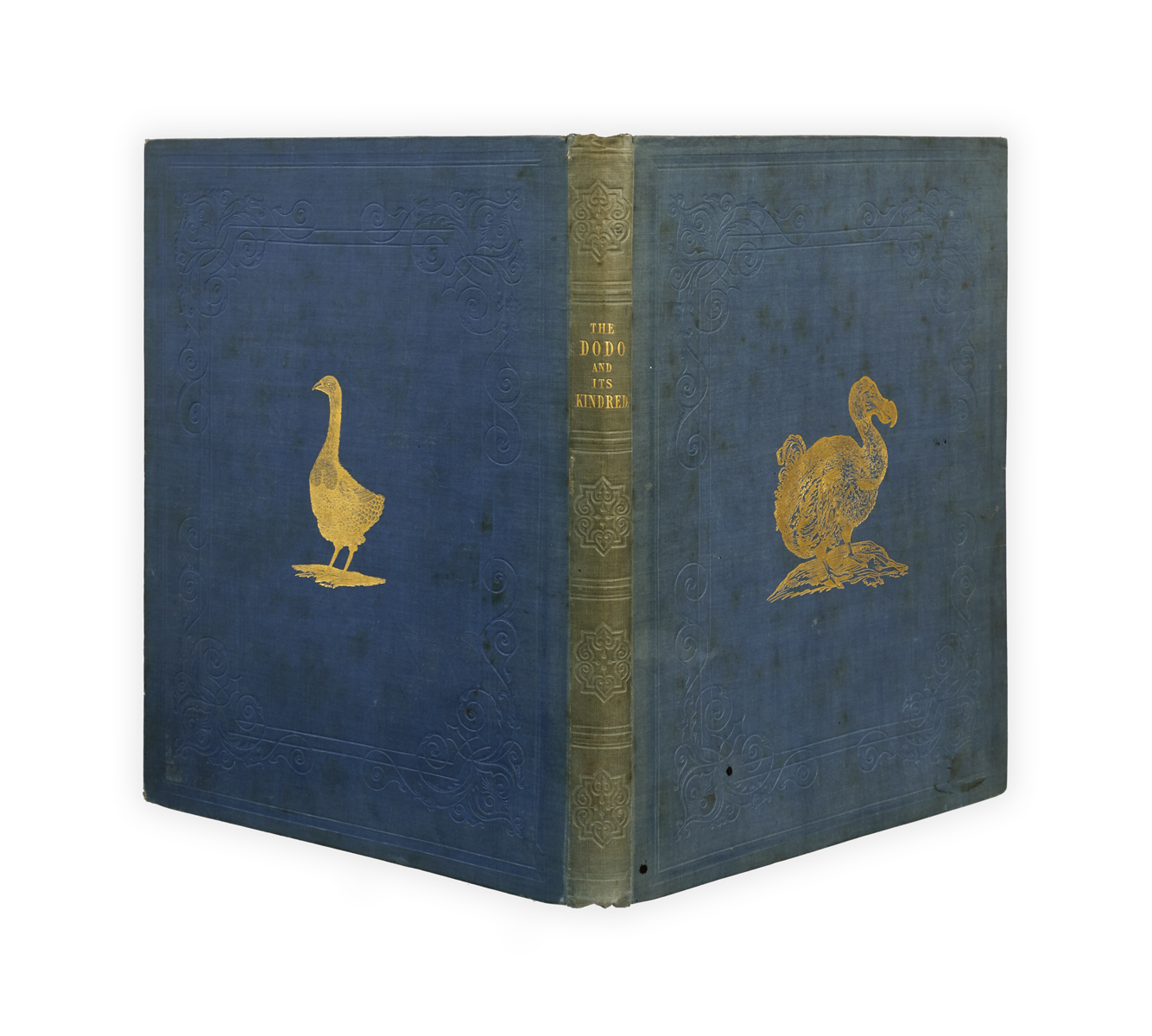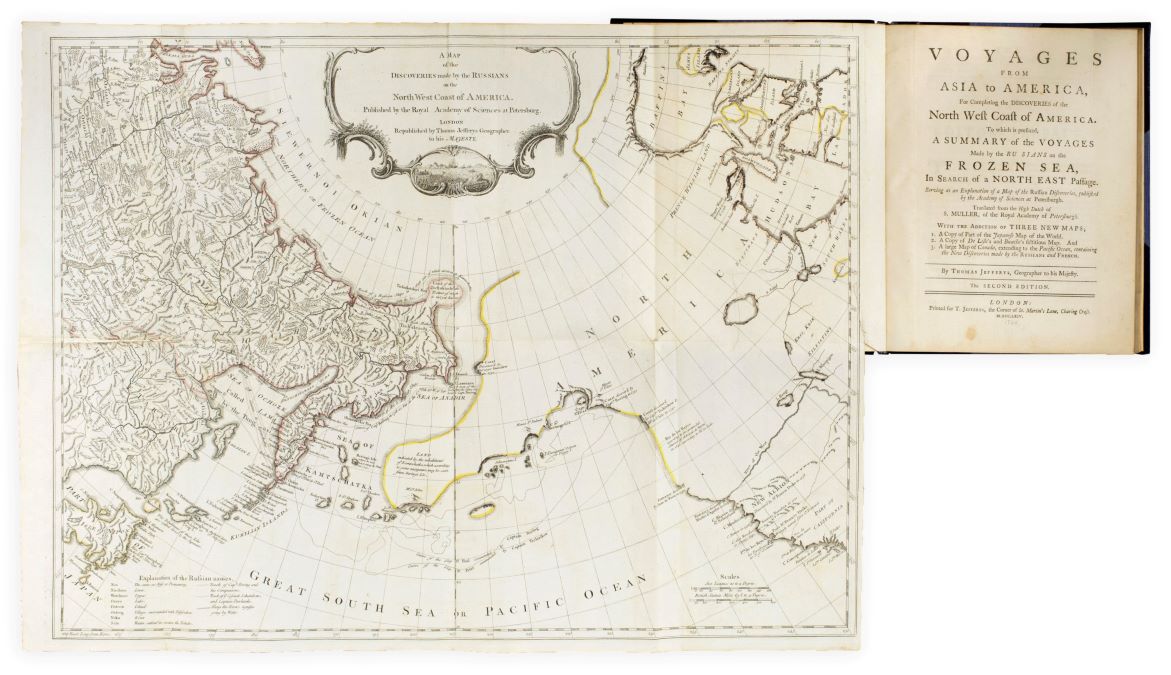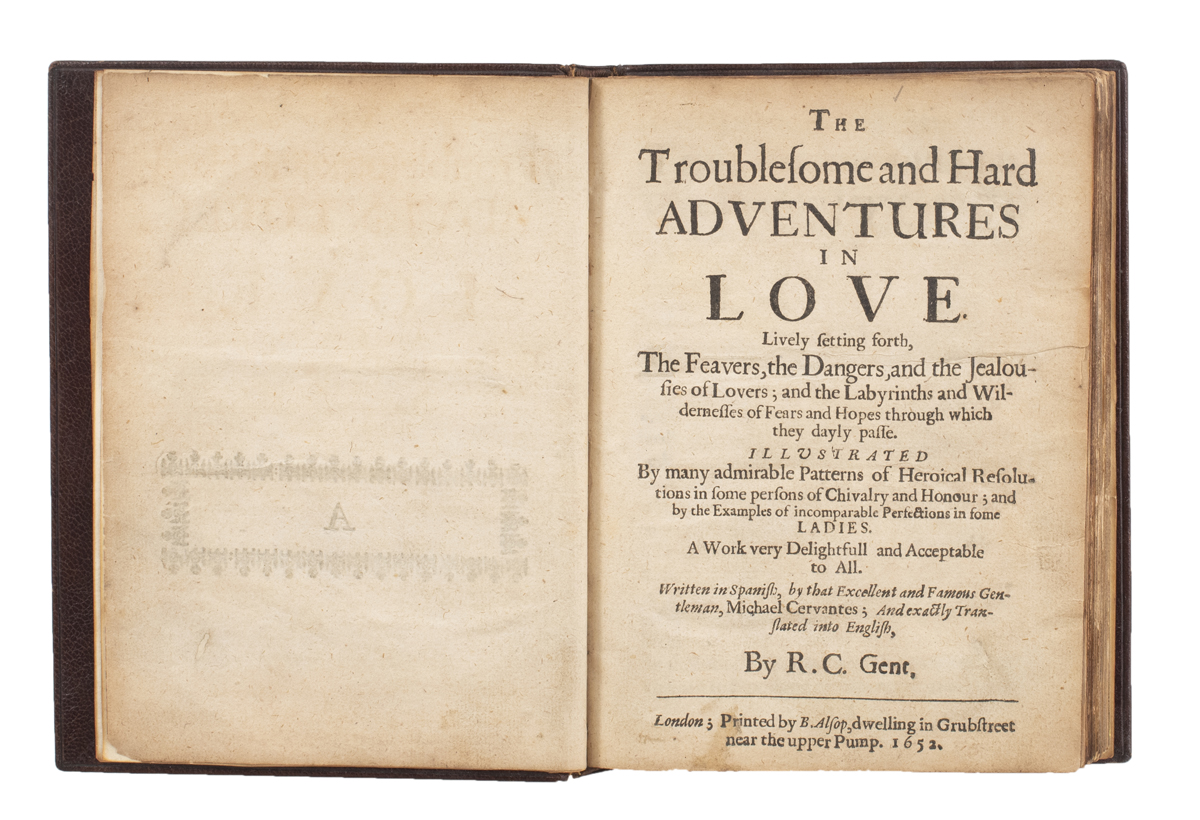




HOLOCENE EXTINCTION
STRICKLAND, Hugh Edwin, and A.
G. MELVILLE. The Dodo and its Kindred; or, the History, Affinities and Osteology of the Dodo, Solitaire and other extinct Birds of the Islands Mauritius, Rodriguez, and Bourbon …
London: Reeve, Benham, and Reeve … 1848.
Large 4to, pp. [10], 141, [1], [12 (advertisements)], with a half-title, a hand-coloured lithograph frontispiece by Catherine Strickland and Vincent Brooks after Roelant Savery, an engraved vignette on the title-page, seventeen plates, including one further hand-coloured lithograph, two ‘papyrograph’ views, and 11 lithographs of skeletons (on thick paper, somewhat foxed, as is plate II), and numerous illustrations within the text; errata slip tipped in at the end; extra-illustrated with different version of Plate II (signed ‘CS 1852’), and a printed offprint: ‘Notice of an Original Painting’ of a Dodo, by W.G. Broderip, pp. [55]–56, dated in manuscript 13 April 1853; from the library of the Strickland family at Apperly Court, with the armorial bookplate of Henry Eustatius Strickland (1777–1865), and the red booklabel of Hugh Edwin Strickland dated 1853, with one marginal pencil note on p. 8; a very good copy in the original blue cloth, front cover blocked in gilt with a dodo, rear cover block in gilt with a solitaire.

Added to your basket:
G. MELVILLE. The Dodo and its Kindred; or, the History, Affinities and Osteology of the Dodo, Solitaire and other extinct Birds of the Islands Mauritius, Rodriguez, and Bourbon …
A fine family copy of the first scientific monograph on the dodo, and a related flightless bird, the Rodrigues solitaire.
‘These singular birds … furnish the first clearly attested instances of extinction of organic species through human agency … and many species of animals and of plants are now undergoing this inevitable process of destruction before the ever-advancing tide of human population’ (p. 5).
In Part I Strickland summarised the historical, pictorial, and scant material evidence of the dodo; for Part II he enlisted Arthur Gordon Melville to analyse the skeletons. Recognising that the success of the work would depend on the quality of the illustrations, he enlisted the help of his wife Catherine Dorcas Maule (née Jardine) (they had encountered Savery’s pictures of the bird while on their honeymoon in 1845) and employed in several plates his own refinement of the anastatic printing process, which he called ‘papyrography’. Plates II, III, III* IV and IV* were printed anastatically; Catherine Strickland drew the frontispiece and plate IV, and executed the lithography on plates III and III*. In the present copy there is added a second, seemingly unrecorded, version of Plate II, signed ‘CS’ (presumably also her).
After Oxford, Hugh Edwin Strickland (1811–1853) devoted his energies to natural history and geology, publishing a stream of scientific articles in the 1830s and 40s; this was his most substantial work. In 1853 he became ‘a martyr both to science and to progress’ (Oxford DNB), when he was struck by a train while inspecting the strata in a railway cutting.
Fine Bird Books, p. 145; Nissen IVB 900.

